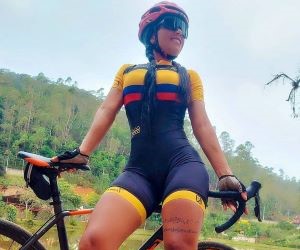Learn how to deal with punctures on long rides with prevention tips, repair techniques, and smart gear choices to keep rolling without stress.
HOW CRUCIAL ARE DOMESTIQUES, TEAM DIRECTORS, AND COLLECTIVE TACTICS IN GRAND TOURS?
This article examines the often-overlooked but decisive role of teamwork in Grand Tours. While the spotlight shines on overall contenders, domestiques, directors, and tactical cohesion determine who ultimately lifts the trophy. We’ll analyze the importance of domestiques in protecting leaders, how team directors orchestrate strategy from the car, and why collective tactics define the difference between triumph and collapse over three weeks of racing. By unpacking real examples and emerging trends, readers will see why teamwork is the backbone of Grand Tour glory.

The value of domestiques
In cycling’s mythology, champions often appear as lone warriors. Yet, the reality of Grand Tours is that leaders cannot succeed without domestiques—the unsung heroes tasked with sacrificing their ambitions for the team. Domestiques are responsible for pacing, shielding leaders from wind, fetching bottles, and neutralizing attacks. Their endurance and loyalty often go unnoticed by spectators, but insiders know they make or break campaigns.
Protecting the leader
Drafting dynamics mean that a leader riding behind teammates can save up to 30% of energy expenditure. Over three weeks, this conservation of watts translates into decisive advantages during mountain stages or time trials. Domestiques form protective echelons, absorb wind, and ensure their captain arrives at key climbs fresher than rivals.
Setting tempo to discourage attacks
Shielding leaders from crashes in the peloton
Delivering nutrition and hydration during long stages
Climbing support and pacing
On mountain stages, climbing domestiques ride at threshold to set a steady pace, discouraging rival attacks. The “last man” domestique—sometimes called the super-domestique—stays with the leader until the final kilometers, bridging gaps and ensuring momentum. This role demands physical strength equal to many contenders, yet it’s used in service of another’s victory.
The psychology of sacrifice
Beyond the watts and kilometers, domestiques provide psychological reinforcement. Their presence reassures leaders under pressure, creating trust and stability. Some riders describe the bond with loyal domestiques as one of the most profound aspects of the sport, proving that loyalty can be as powerful as physical strength.
The influence of team directors
If domestiques are the soldiers on the road, team directors are the generals in the car. Grand Tour victories are not only won with legs but also with tactical brains orchestrating strategy behind the scenes. Directors manage resources, adapt to unfolding race scenarios, and ensure riders execute the team plan with precision.
Race-day decision making
From the team car, directors feed real-time information through radios: weather shifts, rival moves, and road conditions. Their split-second decisions influence whether a breakaway is chased, a tempo is set, or energy is conserved. One poor call can unravel months of preparation, while bold strategy can deliver legendary victories.
Calling when to launch or respond to attacks
Managing time gaps and pacing against rivals
Orchestrating chase groups to control race dynamics
Data-driven strategies
In the modern era, directors rely heavily on analytics. GPS tracking, power meters, and live telemetry provide a constant stream of rider performance data. This enables directors to tailor instructions, prevent burnout, and exploit rivals’ weaknesses. Data has transformed Grand Tours into battles not just of endurance but of algorithms and real-time decision science.
Managing egos and morale
A Grand Tour lasts three weeks, during which fatigue, pressure, and internal rivalries emerge. Directors act as psychologists as much as tacticians. Balancing the ambitions of sprinters, climbers, and GC hopefuls requires diplomacy and charisma. Teams that maintain harmony under stress often outperform more talented but divided squads.
Collective tactics in action
Cycling is often described as a chess match on wheels, and nowhere is this truer than in Grand Tours. Collective tactics—coordinated actions by the entire team—are what transform individual strength into collective dominance. These tactics dictate who controls breakaways, how climbs are attacked, and when stage wins are contested.
Controlling the peloton
Teams with GC ambitions often ride at the front of the peloton, setting tempo to neutralize breakaways. This control reduces chaos, conserving energy for their leader. Rival teams must then burn energy if they want to disrupt the status quo, a classic example of tactical dominance through collective effort.
Chasing down dangerous breakaways
Blocking rival moves on narrow roads
Pacing climbs to control rhythm and reduce attacks
Lead-out trains and stage wins
Sprinters rely on lead-out trains, where domestiques sequentially ramp up speed to deliver their sprinter in perfect position for the final 200 meters. These trains showcase the precision and selflessness of team tactics, where multiple riders sacrifice their energy for one explosive payoff.
The GC battle across three weeks
Grand Tours are wars of attrition. Collective tactics determine how a team navigates transitions, crosswinds, and mountain blockbusters. A well-drilled squad can shield a leader from crises, while rivals struggle alone. History shows that even the strongest individuals falter without collective support, underscoring why teamwork is the decisive factor in three-week races.
Looking ahead, collective tactics will evolve with technology. Radios, live data, and predictive modeling are making tactics more precise, but the essence remains: Grand Tours are won by teams, not individuals. Domestiques, directors, and unified tactics will continue to define cycling’s greatest battles.
YOU MAY ALSO BE INTERESTED






